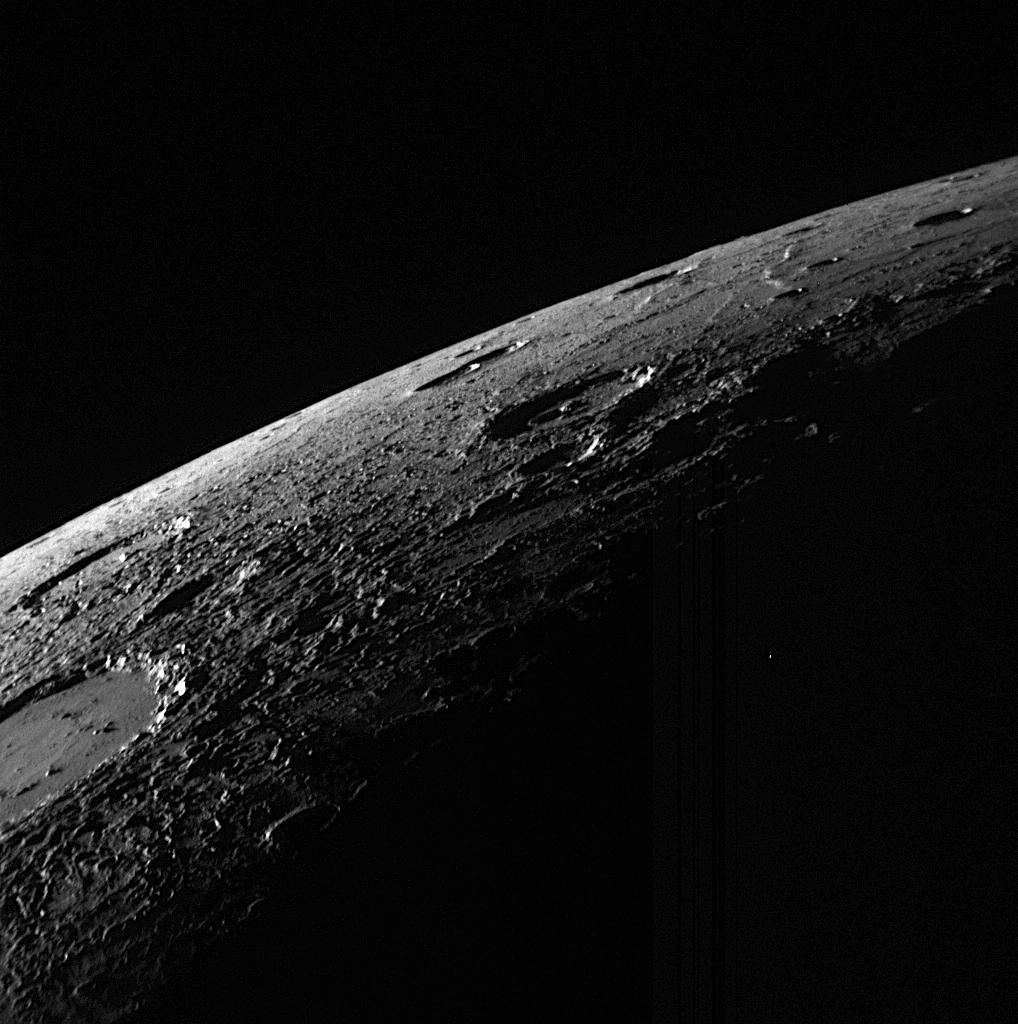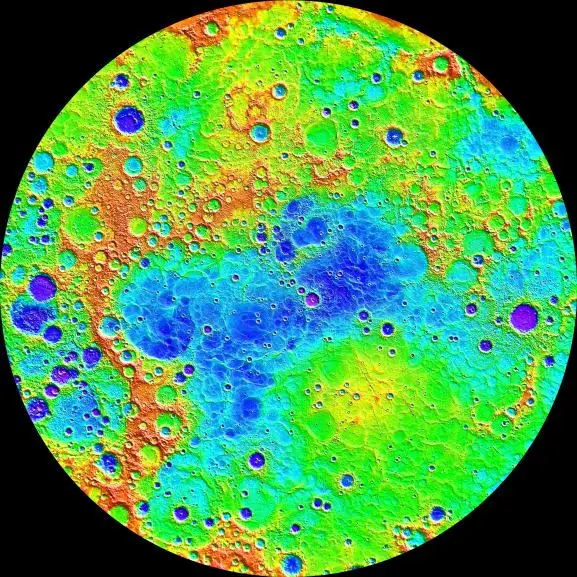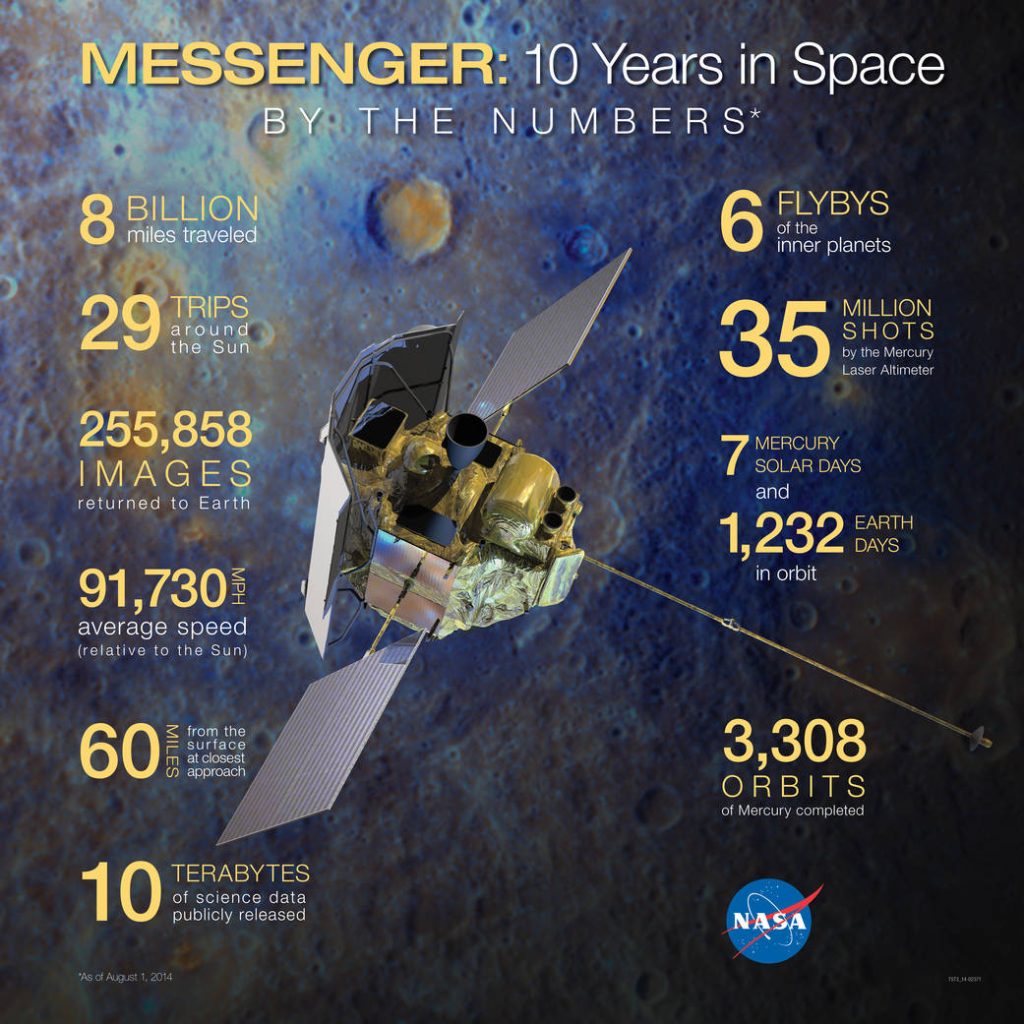Last updated on December 23rd, 2023
Among the eight planets in the Solar System, Mercury is the closest to the Sun and has a lot of significant information that can be collected. With these facts about Mercury, let’s learn more about it.
Named after?
1. Mercury is named after the Roman messenger of gods. The name was chosen because of the high speed with which Mercury revolves around the Sun.
Known as?
2. Mercury has been known in many cultures by different names through the ages. The planet is also known as Budha in ancient Sanskrit religions and Vedic astrology and is a source of positive thoughts.
In existence since?
3. Mercury, like the rest of the bodies in the solar system, was formed about 4.6 billion years ago. Scientists believe they were formed over many millions of years.
Proximity to the Sun?
4. Mercury is closest to the Sun as compared to other planets.
Distance from the sun?
5. Mercury is 0.4 astronomical units away from the Sun. It takes sunlight 3.2 minutes to travel from the Sun to Mercury.

Tilt?
6. Mercury’s axis of rotation is tilted just 2 degrees with respect to the plane of its orbit around the Sun.
Not the hottest!
7. Did you know that Mercury is far more reflective than Venus? That is why it is not the hottest planet in the solar system, even though it is closest to the Sun. In other words, Mercury is not as hot as you would think because of its proximity to the Sun. In fact, it is the second hottest planet in the Solar System.
Hot and cold
8. Two sides — different temperatures: The planet’s side facing the Sun can be as hot as 427 degree Celsius but its opposite side, at the same time, has a temperature of minus 173 degree Celsius. The difference in the temperature is mainly because of the lack of environment/atmosphere to regulate the planet’s temperature.
Weak atmosphere — no seasons
9. There are no seasons on Mercury. All it has is a weak atmosphere that has 38% the gravity as experienced on Earth. The weak atmosphere is because of the low escape velocity of the planet, which allows molecules to escape easily from the atmosphere. The planet doesn’t have any weather, clouds, wind, storms, or even rain because of the lack of atmosphere.
Comparison
10. Mercury is the smallest planet in the solar system. In size, Mercury is comparable to Earth’s moon but slightly larger than it.
About its core
11. Mercury may be the smallest planet in the solar system, but its core is bigger than most. At a radius of nearly 1,300 miles, its core is bigger than those of both Venus and Earth.
12. Regarding Mercury’s core, it contains more metals than the cores of Earth and Venus. About 75 percent of this planet’s core is metallic, while the rest is made up of rocky silicate.
Its composition
13. Different elements like calcium, magnesium, and sodium have been discovered on Mercury lately by scientists. These elements appear to change in concentration as the planet gets closer or moves further away from the Sun.

How dense
14. Mercury is the second densest planet after Earth. This is mainly because of its composition of heavy metals and rock.
About its orbit
15. The least circular and the most eccentric orbit, in the solar system, belongs to Mercury. And remember, a planet’s orbit has a lot to do with other conditions on it including temperature and atmosphere.
Push or pull?
16. The fact that Mercury is so close to the Sun makes you think it may be pulled into the larger body. Different forces from the Sun also push it away to keep it in orbit.
Rotation and revolution
17. At an incredible speed of 47 km per second (169,200 km/h), it is the fastest planet to travel through space. It completes one revolution around the Sun in 88 days.
18. Mercury (it takes roughly 88 Earth days to complete a single orbit around the Sun) does not complete one revolution around the sun in a year and is the only planet to do so. It actually completes three revolutions on its own axis (the planet has a slow rotational period of 58.646 days) during the time it completes two revolutions around the sun.
The Moon vs Mercury
19. Mercury is not tidally locked to the Sun. This is clear from the fact that it makes three revolutions on its own axis during the time it makes two revolutions around the Sun. Moon, however, is tidally locked to Earth as it takes the same amount of time to rotate on its own axis as it takes to revolve around the Earth.
Terrestrial, not a gas giant
20. Mercury is a terrestrial planet (planet made up of metals or rocks).
Its magnetic field
21. Mercury’s magnetic field is just 1% of that of the Earth. It’s magnetic field is just enough to protect it from the force of solar winds. It is, unfortunately, too weak to create and maintain a belt of charged particles.

Always glowing
22. There is a spot in the south pole region of Mercury that almost never goes dark. Scientists know it as the ‘True Peak of Eternal Light, and it receives sunlight about 82 percent of the time.
and permanently under shadow
23. Then, there are other spots on Mercury that never or almost never receive any light and are cast in permanent shadow. These areas are the polar craters on the planet.
Traveling backwards?
24. Three to four times a year, Mercury appears to travel backward in the sky. This phenomenon is known as the retrograde of Mercury and has to do with the shorter orbit of the planet.
No moons , no rings, as simple as that!
25. Mercury is devoid of any moons or rings. Mercury and Venus are the only planets in the Solar System that do not have moons. Thus, it has no moons during the night to illuminate it like Earth. That may be due to the fact that it is too close to the Sun and has a weak gravity.
The first sight!
26. Galileo Galilei observed Mercury for the first time in 1631.
One of the five
27. Mercury is one of the five planets in the solar system that are visible to the naked eye. The other four are – Venus, Mars, Jupiter and Saturn.
Before and after sunrise
28. Mercury is also called a morning or an evening star because it is brightly visible in the sky just before the sunrise and just after the sunset.

13 times in a century
29. Mercury can be observed 13 times every 100 years from Earth. The event of the passing of Mercury across the face of the Sun is called “transit.”
The challenge from the Sun
30. Scientists have imaged Mercury almost entirely with the help of the space crafts that were sent on various exploration missions. Mercury has seen only two guests from Earth till 2018 – “Mariner 10 and the Messenger probe.” The reason behind limited space crafts being sent to Mercury: its close proximity to the Sun which makes it difficult for the space crafts to survive in the intense heat.
7 years waiting time
31. “BepiColombo” — named after a famous Italian mathematician and scientist – Giuseppe (Bepi) Colombo (1920-1984) — is ESA’s mission to mercury that was launched in 2018. The multi-spacecraft mission will take at least 7 years to reach its orbit (Dec. 5, 2025: Mercury orbital insertion) around Mercury. This is a joint mission between Japan Aerospace Exploration Agency and ESA. During its journey to Mercury, the mission will see 9 flybys of Earth, Venus, and Mercury.
How Venus helped?
32. Mariner 10 is the first spacecraft to reach one planet by using the gravity of the other (in this case, Venus) to alter its speed and trajectory. The spacecraft lifted off from Cape Canaveral, Florida, on 3 November 1973 and reached Venus on February 1974. It was also the first probe to visit two planets.
Every inch mapped
33. Images used by Mariner 10, sent to Mercury in the 1970s, were used to create a picture of only half the planet’s surface. About 2700 pictures were taken during three flybys. Every square meter of the entire Mercury has been fully mapped to give a complete picture of what it looks like. All this has been done from the craft in orbit around the planet.

The birth of a new crater in 2015
34. NASA’s spacecraft “MESSENGER” crash landed on Mercury in April 2015. The spacecraft provided a lot of detail about the planet through images that will be used by the scientists to known more about this terrestrial planet in the future.
Color
35. Mercury is greyish-brown in color. This is the color that has been recorded from the ground and space-based observations.
36. Just like the moon and Venus, Mercury also goes through different phases. When observed from Earth, you see different parts of it because it is entirely inside our planet’s orbit. But many experts previously believed that we always see the same side of Mercury from Earth. However, it was proven in 1965 through radar measurements that this was not true.
37. As suggested by the images that were collected by space crafts, the surface of Mercury is formed mainly by impacts and volcanic activities. Even the presence of some ancient lava fields on the planet’s surface suggests that there was some volcanic activity on Mercury in the past.
38. Mercury does have a lot of volcanoes, but they are no longer active. The cores of smaller planets like Mercury have cooled down over the years and are not hot enough to melt rocks anymore.
39. Mercury is also a tectonically active planet like Earth. As the core cools down, it causes changes in its surface and produces scarfs and cliffs.
. . . continue reading on the next page
